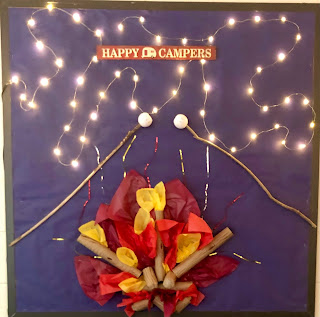👋🎭 Hello, Amazing School Counselors! 🌟
Are you ready to embark on an exciting new school year and connect with your students in a unique way? Get ready to have some fun as we explore the world of school counseling using emojis! 🎭✨
💼👥 Building Trust and Comfort:
First, let's focus on building trust and making our students feel comfortable. We want them to see us as their trusted allies, someone they can rely on for support. When they feel at ease with us, they'll open up about their thoughts, worries, and challenges without hesitation. Together, we'll create a safe space where they can seek guidance and support on their school journey. 🤝💛
💖💭 Emotional Support and Guidance:
As school counselors, we're equipped to handle any emotional challenge. By building strong relationships with our students, we provide them with a safe space to express their feelings, navigate conflicts, and develop vital social skills. We'll teach them about self-regulation, empathy, and effective communication, empowering them to conquer emotional obstacles. 🌈🤗
📚🚀 Academic Assistance:
But wait, there's more! We're not just there for emotional support; we have incredible academic powers too. Our mission is to equip our students with the skills they need to succeed academically. From mastering new concepts to managing their workload, we'll share strategies for effective studying, time management, and organization. With our guidance, they'll soar to new heights and unlock their true potential. 🎓📚
🤝👫 Building Social Skills:
In addition to academics, it's important to help our students develop strong social skills. Elementary school is a crucial time for them to learn how to interact with others. Let's organize fun group activities that promote teamwork, empathy, and conflict resolution. Through these activities, our students will form meaningful connections, develop a sense of belonging, and create a positive school community. 🤝🌍
🌟🚀 Future Planning:
And let's not forget about their future! It's never too early to ignite their curiosity and exploration. As their trusted guides, we'll introduce them to various professions, encourage them to discover their interests and foster a love for lifelong learning. Together, we'll nurture their dreams and help them envision extraordinary paths. 🌠📅
🎉🤝 Meeting the Counselor:
To kick off our journey, let's start with a fun "Meet the Counselor" introduction. We'll use emojis to represent the different aspects of our role. Introduce yourself and share some information about how you can help students with schoolwork, family issues, friendship problems, and more. Let them know that you are there to support them. 🎭💼👥
During the "Meet the Counselor" activity, we can use the 🎭 emoji to represent our role as listeners and explain how we are there to listen to their concerns. We can also use the 👂 emoji to represent our attentive ears and encourage students to reach out to us when they need someone to talk to.
📍🏫 Location of the Counselor's Office:
Make sure your students know where to find you. Use signs and create a welcoming counseling space. Let them know how to reach you, whether through a mailbox, their teacher, or email. Help them feel confident and empowered to seek your help whenever they need it. 🗺️🏢
To represent the counselor's office location, we can use the 📍 emoji to indicate the physical location of our office. We can also use the 🏫 emoji to symbolize the school building and explain that we are always available within its walls.
🌟🎭 Get to Know You Emoji Activity:
To make our connections even stronger, end the lesson with a fun "Imagine Me as an Emoji" activity. We want to get to know each other better and celebrate our uniqueness. Have students draw an emoji (picture) that represents them. 🎉
As students share their emojis, take the time to listen and appreciate their unique characteristics. This activity will not only help us learn more about our students but also create a sense of belonging and celebration within the group. Let's celebrate each other's individuality and build a stronger bond as a counseling community.
So, fellow School Counselors, let’s get ready for another exciting school year! Together, we'll empower our students to grow, overcome challenges, and embrace their unique selves. Let the emoji-inspired counseling journey begin! 🌟🚀😊
Ready to Use Resource










































